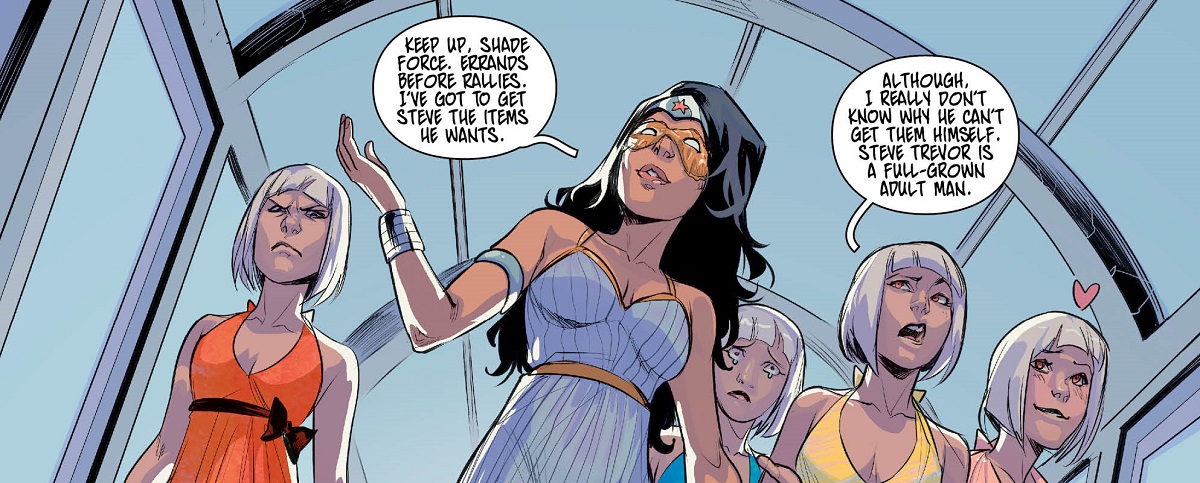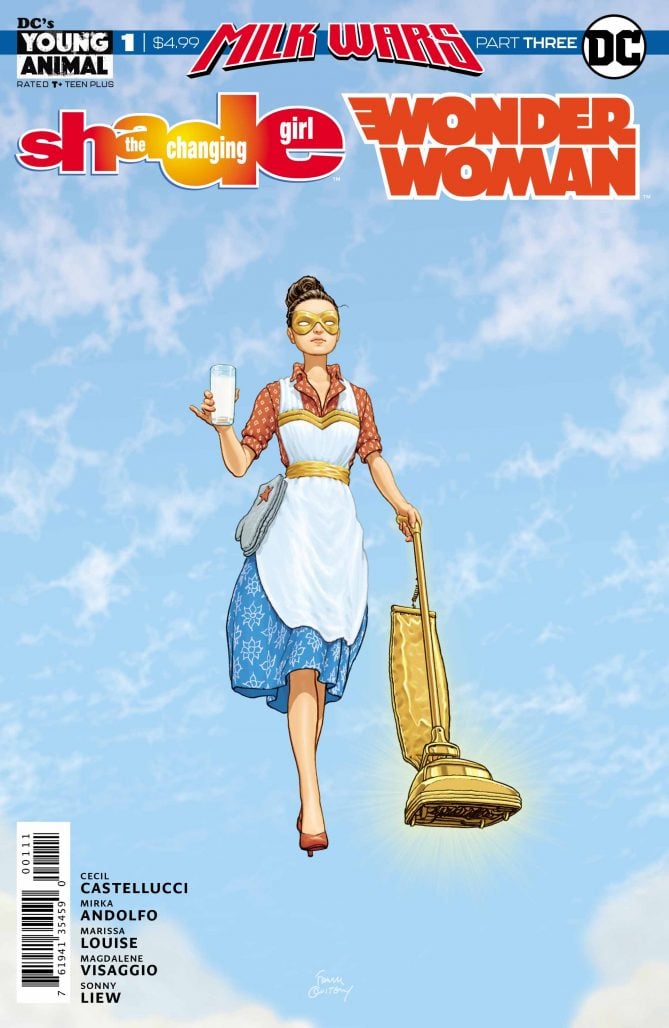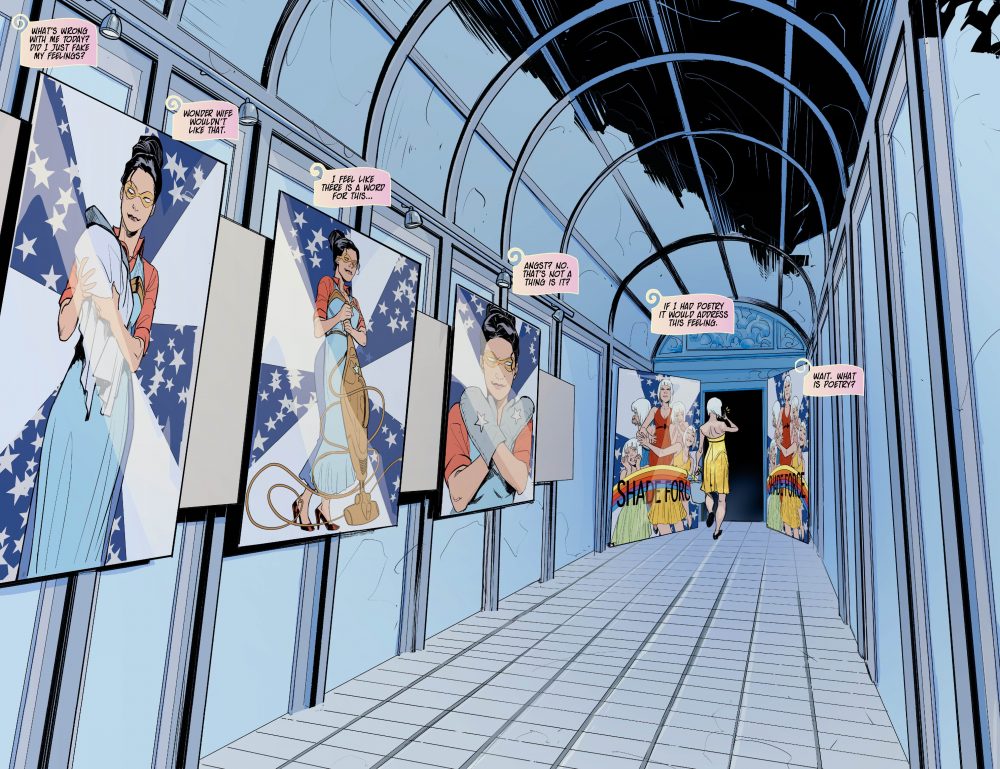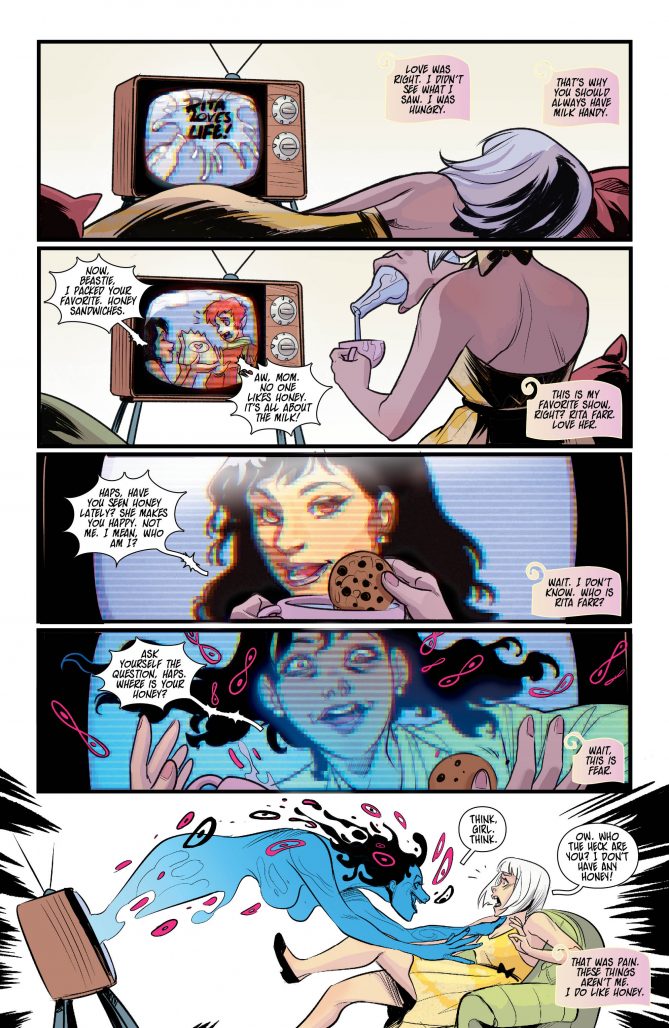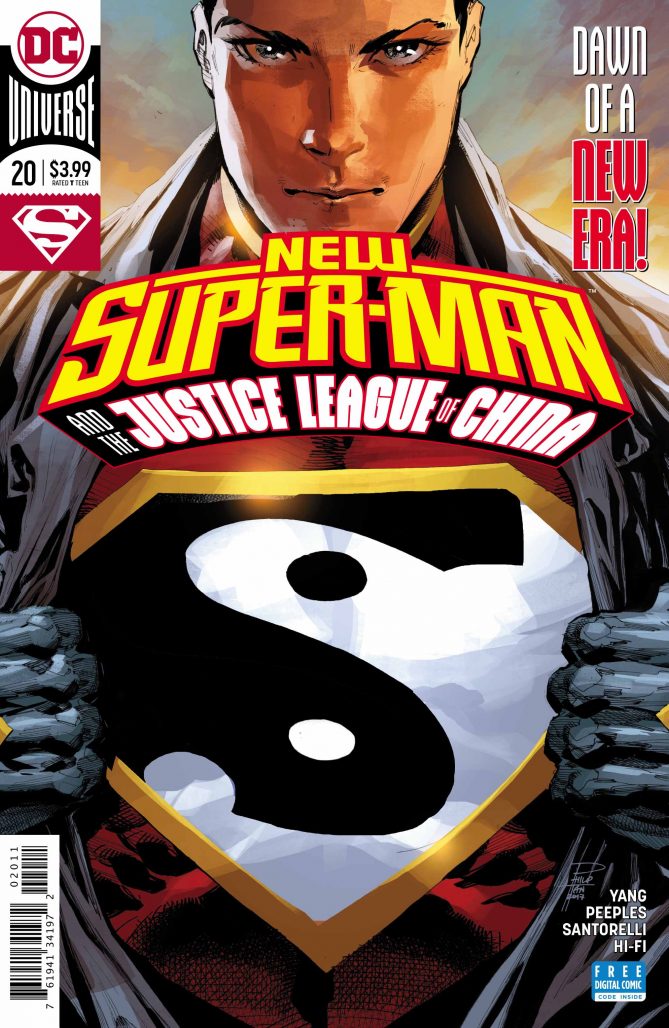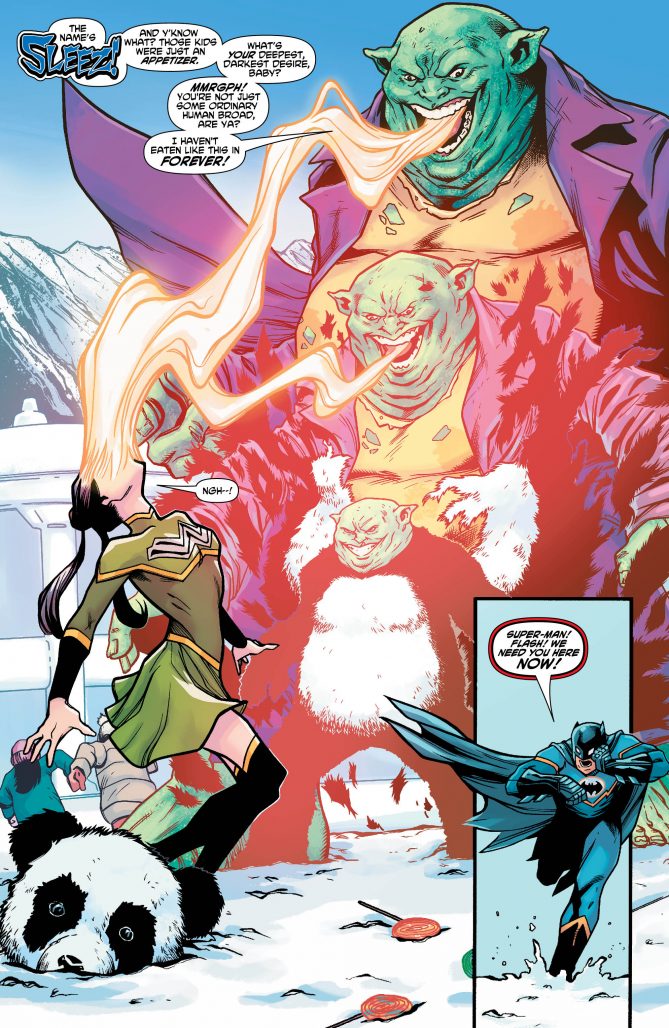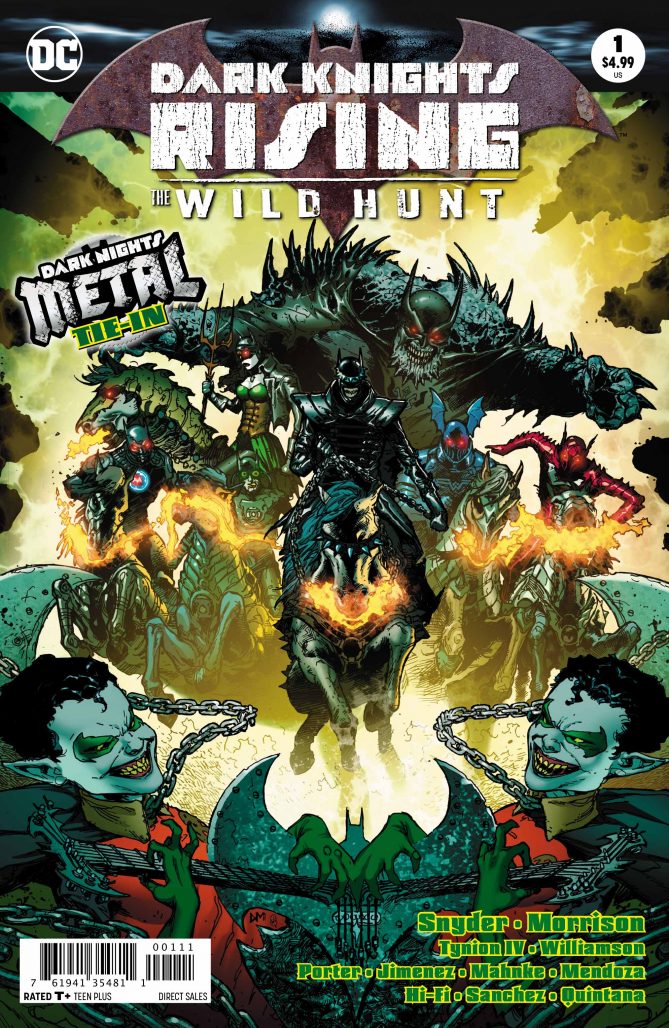In June 2016, DC Comics kicked off the start of its Rebirth initiative. After a wave of criticism surrounding the way they have treated their characters’ rich histories since 2011’s New 52 relaunch, DC has decided to rebrand. They hope that by restoring their characters’ pasts, they will restore readers’ faith in them as well. Do they succeed? That’s what the Comics Beat managing editor Alex Lu, entertainment editor Kyle Pinion, and contributor Louie Hlad are here to discuss. Book by book. Panel by panel.
THIS WEEK: Alex reviews New Super-Man‘s new era and dives back into “Milk Wars” with Shade the Changing Girl/Wonder Woman #1.
Note: the reviews below contain **spoilers**. If you want a quick, spoiler-free buy/pass recommendation on the comics in question, check out the bottom of the article for our final verdict.
 Shade the Changing Girl/Wonder Woman #1
Shade the Changing Girl/Wonder Woman #1
Writer: Cecil Castellucci
Artist: Mirka Andolfo
Colorist: Marissa Louise
Letterer: Saida Temofonte
When I was growing up, nobody understood my mother, least of all her co-workers. She’d regularly tell my sister and I that when she described her daily schedule to the people she’d work with, they’d ask in a mixture of shock and horror “you cook every night?!” In addition to shuttling the two of us to piano lessons and sports games. To cleaning the house and making sure our homework was done. And of course, working a 9-5. It’s more than any one person should have to handle, and yet my mother did it. She sacrificed so much to do it– most of all, I think, her sense of self.
When I was growing up, a part of me used to think that my mother didn’t have dreams before she had us. But she did. And she suppressed them to do what mothers in America so often do. To be the good mother. To be the Wonder Wife. And to be fair, she was all that and more. But being so good at one thing comes at a huge cost– that cost is what Shade the Changing Girl/Wonder Woman #1 seeks to explore.
One of the best things about Young Animal’s “Milk Wars” crossover is how the individual chapters of the event manage to maintain their unique identities despite all these titles pushing the same storyline forward. Mother Panic/Batman #1 felt like a Mother Panic story, with its grit and fervor, despite coming on the heels of the incessantly bright and weird Doom Patrol/Justice League of America #1. And this week, despite the guest appearance of the strong and mighty Wonder Woman, Shade the Changing Girl/Wonder Woman #1 manages to feel exactly like the psychedelic, internally focused adventure we’ve come to expect from Shade‘s solo title.
The basic premise of the story is this: like everyone else on Earth-Prime, Loma Shade and Wonder Woman have both been altered and reformed by RetConn’s magical milk. Wonder Woman has been recast as Wonder Wife, the perfect domestic housewife whose life is focused on making sure the women of the world keep clean houses, raise healthy kids, and please their husbands. She accomplishes these goals with the help of the Shade Force, a group of five Shades who can each only feel one emotion– Happiness, Sadness, Fear, Anger, and Love– and can impress that emotion onto others.
Yes, that latter bit is a conceit that cribs more than a little bit from Inside Out, but I’m a sucker for the idea and I think it’s actually perfect for a Shade story. Her conflicts have always tended to be more inwardly focused, so externalizing these emotions is a great opportunity for her to grapple with her emotions in a way that lends itself to strong visual storytelling.
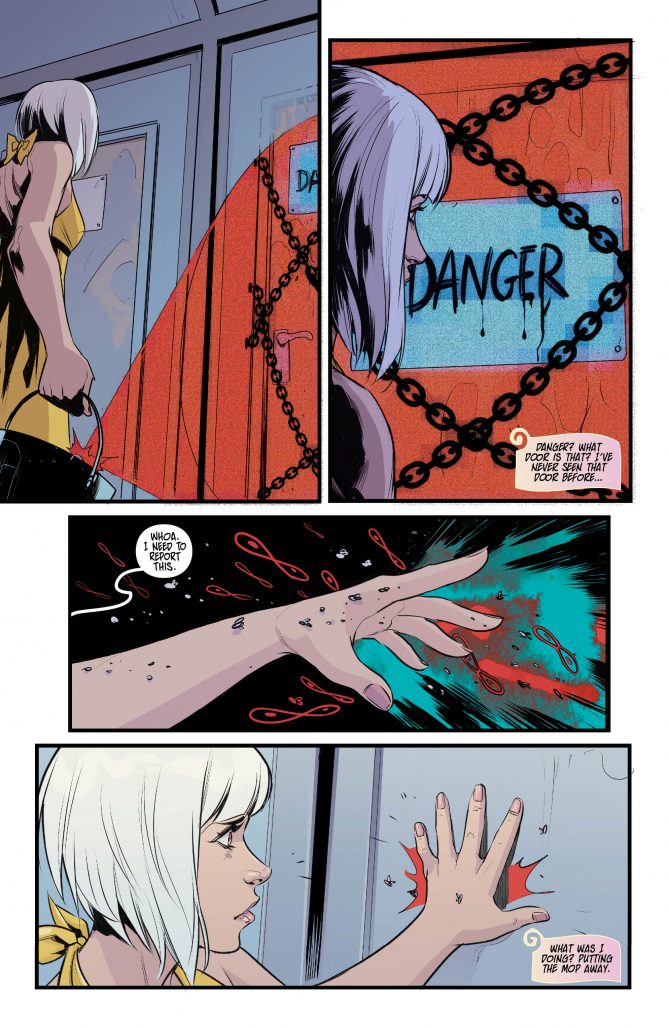
From this starting point, we follow the Happy element of Shade’s split persona, referred to as “Haps” throughout the comic, as she begins to feel strange doubts about her and Wonder Wife’s place in the world. These doubts echo the thoughts that sparked the women’s rights movement that continues to this day, with Shade insisting to Wonder Wife that “there must be battles other than the emotional or the domestic that we could win.” And when she is rebuffed, she couches her disappointment in the notion that so many people left feeling abandoned by society without recourse tell themselves: “lying gets easier the more you do it.” That maybe if you keep insisting “you’re okay” to yourself, even though you’re not, that one day you will be.
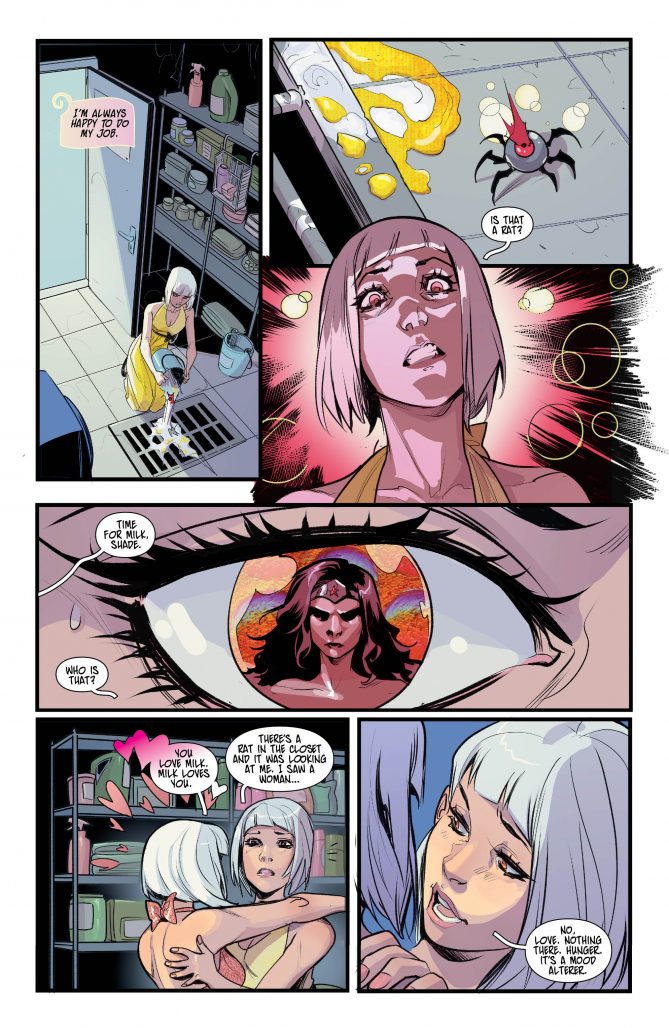
Later, at a major crux of the story that revolves around a Women’s Rally, the layouts of this story start to get confusing again. It is, by nature, a very difficult scene to pull off, as it revolves around the Shade Force manipulating the emotional states of Wonder Wife and a group of protesters while Haps tries to alter Wonder Wife’s emotions in a way that forces her to recall her true identity as Wonder Woman. But unfortunately neither the art nor narration ever makes it totally clear what is happening in this scene from panel to panel. Once I sat and thought about the scene, it began to make a bit more sense, but again, it felt disjointed on an initial read, which leads me to conclude that we needed more information for the scene to work the way that it was intended to.
All in all though, I think Shade the Changing Girl/Wonder Woman #1 is, in spite of some major issues, quite a remarkable book. It’s message is perhaps the most nuanced and refined of all the Milk Wars titles so far, and everyone on this creative team is firing on full cylinders, making even the most baffling moments of the book enjoyable to watch. It’s not a technically perfect work by any stretch, but it has definitely stuck with me in a way that few comics do.
Verdict: Buy
 New Super-Man and the Justice League of China #20
New Super-Man and the Justice League of China #20
Writer: Gene Luen Yang
Penciller: Brent Peeples
Inker: Matt Santorelli
Colorist: Hi-Fi
Letterer: Dave Sharpe
As I mentioned the last time I wrote about New Super-Man, Kenan Kong has quietly become one of the most reliably interesting characters in the current DC Universe lineup. From his starting point as a relatively unlikable asshole blessed with powers he did not deserve, Kenan has made a remarkable leap forward as both a hero and a person. He’s still incredibly flawed, but he’s trying to be better. This emotional journey has taken him on a much wider and more resonant arc than what we typically get out of our age-old superhero stories where little is allowed to change. And the result is a rapidly expanding corner of the DC Universe– hence the new title for the series– that brings not only representation to the newsstands, but a quality set of stories as well.
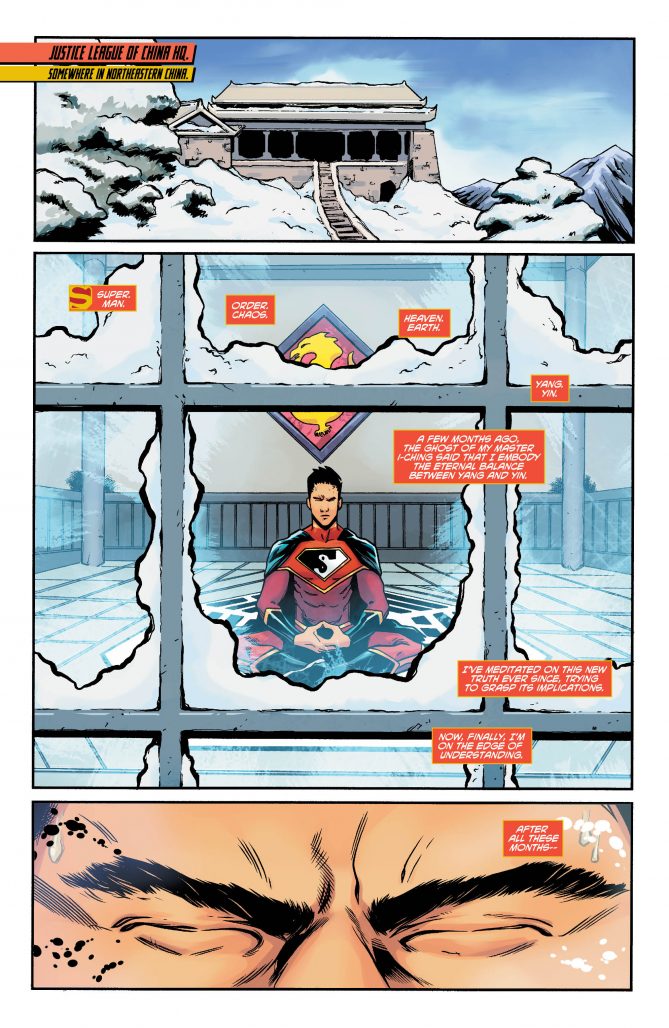
This week, that conflict is put at the forefront of New Super-Man and the Justice League of China #20 by a surprisingly deep cut from Jack Kirby’s Fourth World saga. While on holiday, Wang Baixi (Bat-Man) and Peng Deilan (Wonder-Woman) are attacked by Sleez, an empath from Apokolips who feeds on peoples’ emotions to increase his physical strength. Throughout this issue, we see attention called to Kenan’s strangely awkward and active attempts to be more mindful in his interactions towards others, emphasizing his Yin in order to tone down his Yang in an attempt to find balance. However, when Kenan joins the fight against Sleez, the New God begins to feed on the intensity of Super-Man’s suppressed emotions. And in response, Kenan discovers that, now that he has absorbed All-Yang, he can now channel his Yang in order to increase his strength, thus heightening the stakes of Super-Man’s internal conflict. It forces us to wonder– if put into a dire situation, would Kenan give himself over to Yang in a desperate attempt to save the people he cares about? And if he does, what happens to him?
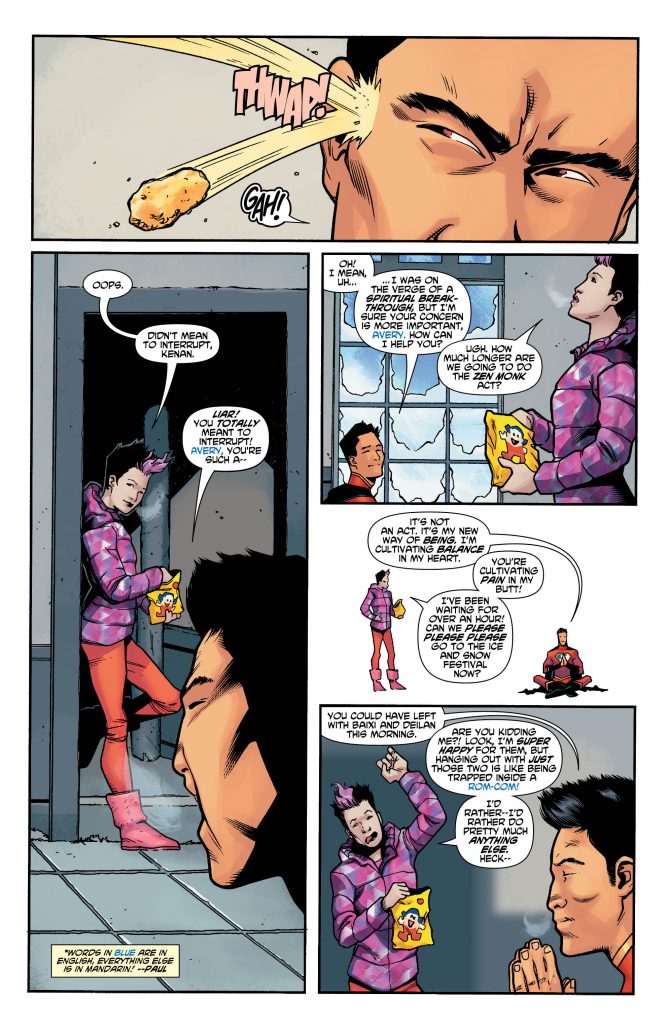
Moreover, I really enjoy the relationship that the creative team her is developing between Kenan and Avery, the Chinese-American Flash. I think it takes some deftness to write and maintain a flirtatious dynamic in a story that doesn’t make things too creepy or too obvious to the reader. It’s a testament to Gene Luen Yang’s skills as a writer that the banter between these two is as fun to read as it is (god I hope they get together soon).
And finally, we get to Ahn Kwang-Jo, the…North Korean Aquaman! This is a pretty loaded character introduction, given the place that North Korea currently occupies in the American public’s consciousness, but the creative team behind New Super-Man handles it relatively well, albeit simplistically. Throughout this issue, we don’t really get a sense of what North Korean life is like or spend that much time there at all in general. Instead, we’re quickly introduced to Ahn, an incredibly smart but nervous university student who is taken out of class one day for questioning by the militant North Korean government because they found a TV in his apartment altered to receive western TV channels. Ahn is beaten for his perceived betrayal of North Korean values, but is saved by two giant crabs who seemingly emerge from his profuse puddles of sweat (it’s a weird power, but a fun one).
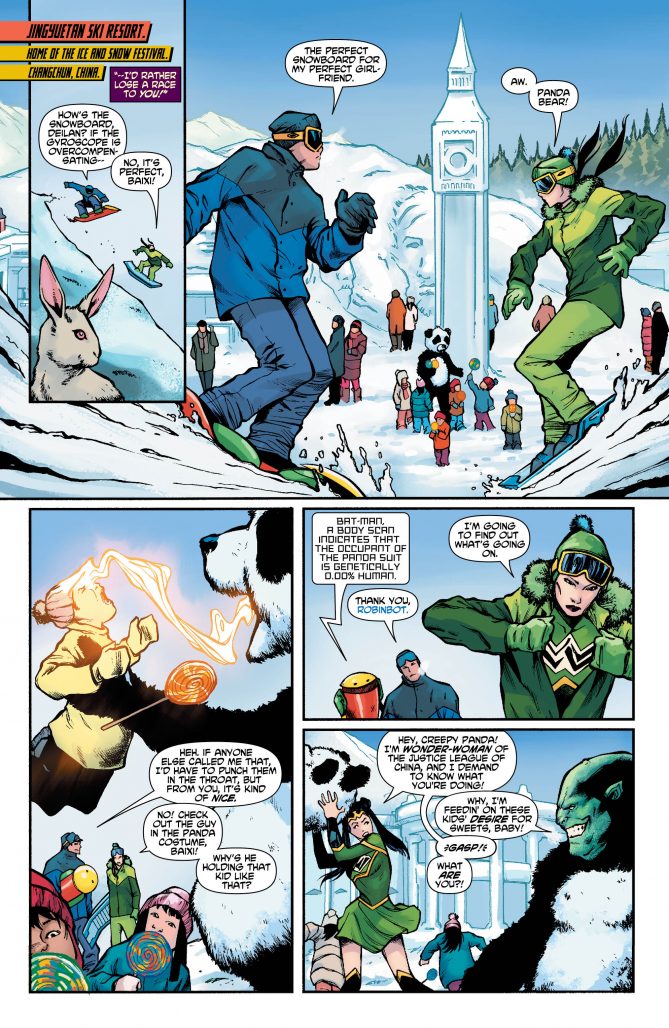
That said, there’s still time! We’re only just getting started with Ahn’s journey and with his giant crabs already in the sights of the Justice League of China by the time this issue ends, it seems like things are going to escalate quite quickly. New Super-Man and the Justice League of China is an absolutely singular title in DC’s current line up, so if you haven’t tried it yet, now is definitely the time to give it a shot.
Verdict: Buy
 Round-Up
Round-Up
- Normally we don’t really talk about the Director’s Cuts DC releases for some of their single issue titles, but Mister Miracle: Director’s Cut #1 is a little different. In addition to the typical look you get at the uncolored issue inks and the issue’s script, this Director’s Cut includes a brand new prologue to the series itself. Written by Tom King and drawn by Mike Norton, with Jordie Bellaire on colors and Clayton Cowles on inks, this prologue takes a look back and summarizes the history of Mister Miracle from the beginning of the war between Apokalips and New Genesis up until the start of Mister Miracle. For those who aren’t familiar with the history of the Fourth World, it’s worth a look. And it’s quite pretty to boot!
- If you look at my Shade the Changing Girl/Wonder Woman #1 review above, you could basically copy and paste the spine of it to form my thoughts on Dark Knights Rising: The Wild Hunt. With Grant Morrison joining Scott Snyder, James Tynion IV, and Joshua Williamson on scripts, you know you’re in for a particular kind of book. And yeah, in conceit, it really is my kind of book, using Bobo, the Detective Chimp, as a focal character for a motley crew of DC heroes’ last desperate attempt to save the Multiverse from the evil Batmen of the Dark Multiverse. There’s a lot of dabbling in metafiction throughout this one shot and you get some lovely moments with the Ultima Thule, recalling Final Crisis and The Multiversity. However, in the end, this issue falters under the weight of all the chaotic elements of the Metal and various past Morrison events crashing together. The idea behind all of it is solid, but it’s hard to visually portray so much stuff without some clarity being lost to the casual reader. But more hardcore fans will probably enjoy picking over all of it nonetheless.
- If you were looking for confirmation of Clayface’s tragic death in Detective Comics #974, you got it. The dominoes are falling faster than anyone can keep up now, and it’s absolutely tragic to watch. I really miss Basil’s soft hearted nature already. And I can’t believe he wanted Glory Griffin to have the cure anyways. CLAYFACE WAS CLEARLY TOO PURE FOR THIS WORLD.
- Sideways #1, the third New Age of DC Heroes title, is out today! I’ll have an interview with co-writer and DC co-publisher Dan DiDio coming out later today, where we talk about the niche the series carves out for itself in the DC Universe and elucidate what role Grant Morrison will play in the series in the near future.
Miss any of our earlier reviews? Check out our full archive!


